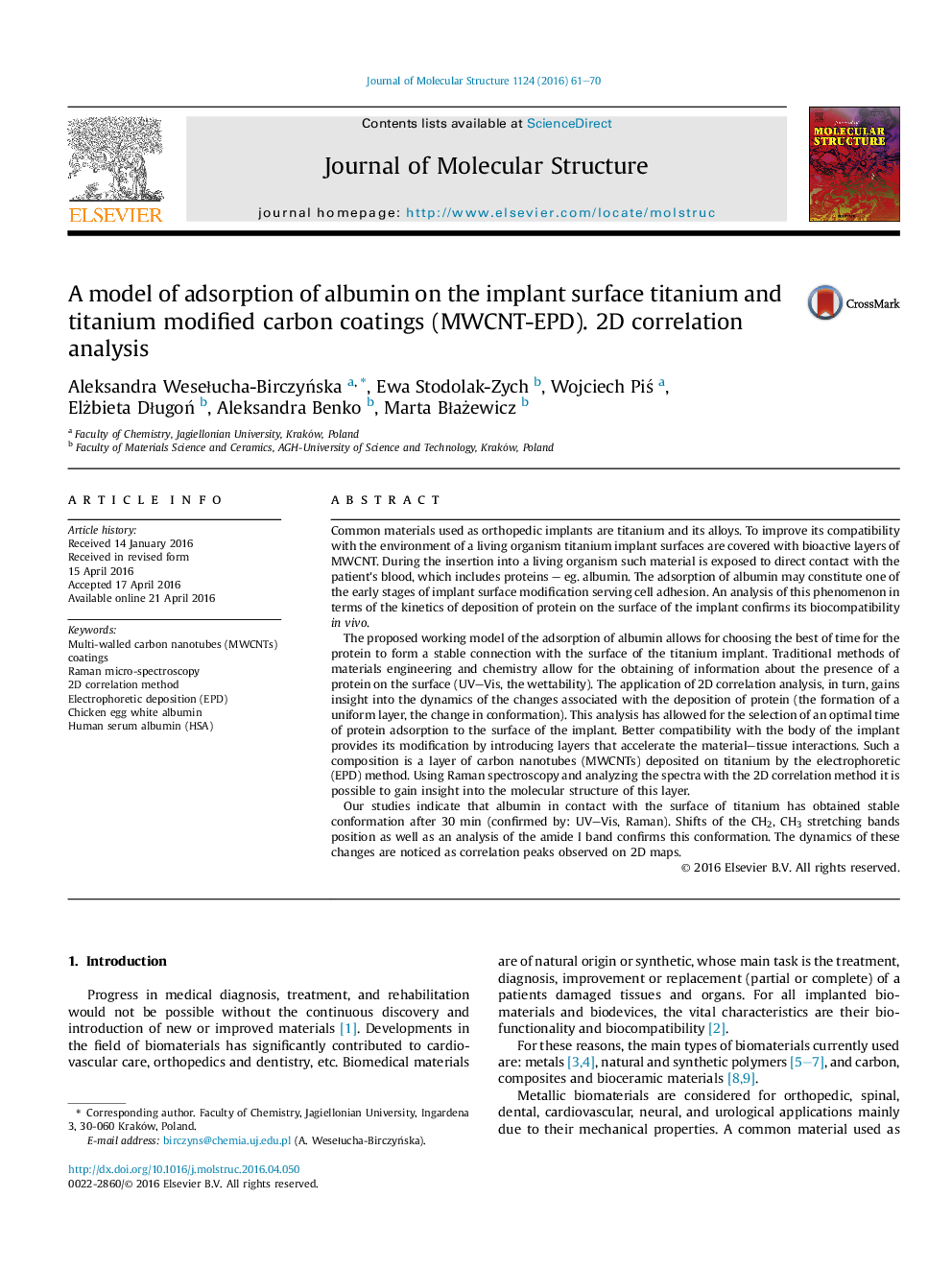| کد مقاله | کد نشریه | سال انتشار | مقاله انگلیسی | نسخه تمام متن |
|---|---|---|---|---|
| 1401049 | 1501693 | 2016 | 10 صفحه PDF | دانلود رایگان |

• A Ti surface reinforced by MWCNTs coating formed in the EPD process was analyzed.
• A 2D correlation analysis confirmed that coatings are featured of nanostructured carbon.
• The adsorption of chicken albumin on a Ti surface is different than with human albumin.
• Chicken egg white albumin acquires a stable conformation on the Ti surface after 30 min.
• Human albumin achieves a stable configuration on Ti after only a 15-min incubation time.
Common materials used as orthopedic implants are titanium and its alloys. To improve its compatibility with the environment of a living organism titanium implant surfaces are covered with bioactive layers of MWCNT. During the insertion into a living organism such material is exposed to direct contact with the patient's blood, which includes proteins – eg. albumin. The adsorption of albumin may constitute one of the early stages of implant surface modification serving cell adhesion. An analysis of this phenomenon in terms of the kinetics of deposition of protein on the surface of the implant confirms its biocompatibility in vivo.The proposed working model of the adsorption of albumin allows for choosing the best of time for the protein to form a stable connection with the surface of the titanium implant. Traditional methods of materials engineering and chemistry allow for the obtaining of information about the presence of a protein on the surface (UV–Vis, the wettability). The application of 2D correlation analysis, in turn, gains insight into the dynamics of the changes associated with the deposition of protein (the formation of a uniform layer, the change in conformation). This analysis has allowed for the selection of an optimal time of protein adsorption to the surface of the implant. Better compatibility with the body of the implant provides its modification by introducing layers that accelerate the material–tissue interactions. Such a composition is a layer of carbon nanotubes (MWCNTs) deposited on titanium by the electrophoretic (EPD) method. Using Raman spectroscopy and analyzing the spectra with the 2D correlation method it is possible to gain insight into the molecular structure of this layer.Our studies indicate that albumin in contact with the surface of titanium has obtained stable conformation after 30 min (confirmed by: UV–Vis, Raman). Shifts of the CH2, CH3 stretching bands position as well as an analysis of the amide I band confirms this conformation. The dynamics of these changes are noticed as correlation peaks observed on 2D maps.
Journal: Journal of Molecular Structure - Volume 1124, 15 November 2016, Pages 61–70